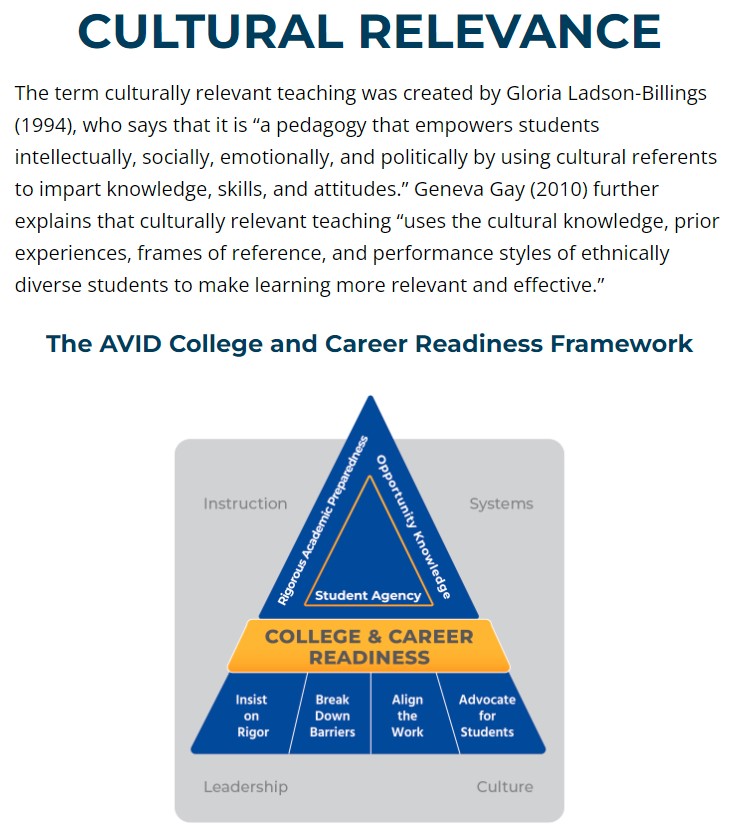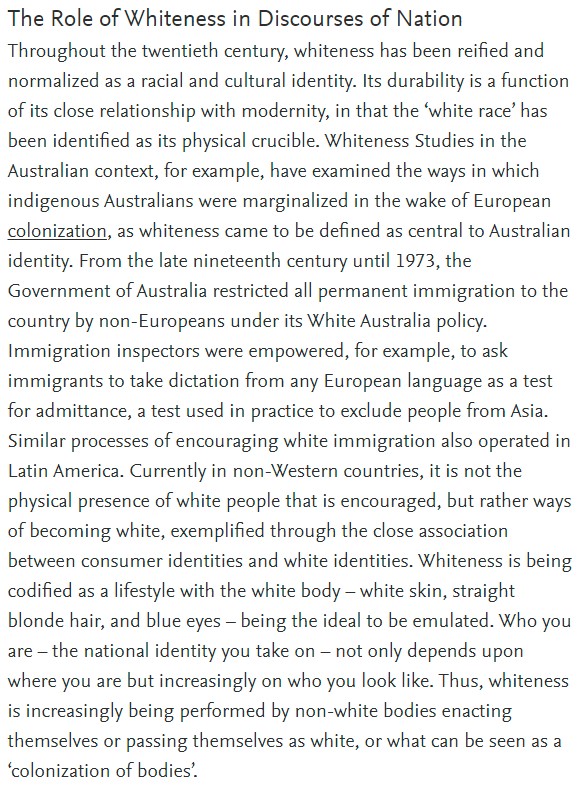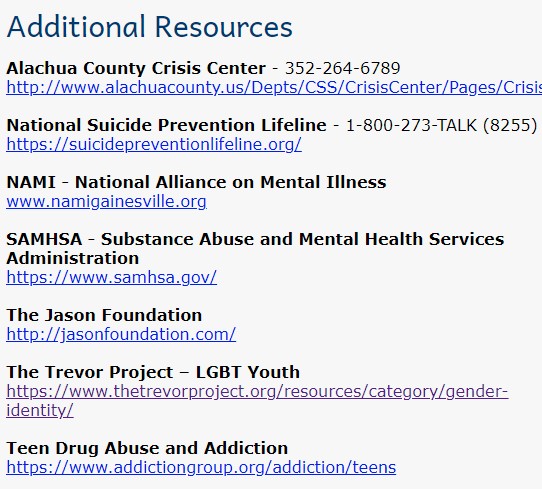
Alachua County Public Schools implements “racial equity” into all subjects of curriculum; provides “gender support plan” for transgender students that can exclude parents
Incidents
Alachua County Public Schools has an online page for the district’s “Office of Education Equity and Outreach.” The school district states on the page that equity “is a value system that must be prioritized to be effective.” The district established the equity office in September 2017 “specifically to address the achievement gap through the development of an equity plan, training, and community partnerships.” A focus of the office has been to provide “training with teachers and administrators on culturally responsive classrooms.” The term “culturally responsive” is often used to describe a method of teaching that includes the race and ethnicity of students as part of the lessons taught in classrooms. The page also shows that the school district has a “Chief of Equity, Inclusion, and Community Engagement.”

The school district’s equity page links to a document titled “Conage Continuum of Education Equity.” The document promotes “advocacy” among schools. The document is a chart that starts with the “status quo” which represents “apathy.” The document describes “apathy” as “actively or passively resisting, discouraging or impeding movement of oneself and/or others forward along the continuum.” In the “apathy” category in the chart, the document relates the action to “ignoring minimizing or disregarding evidence of inequities correlated to race and culture.”
The chart then moves to “awareness.” The document describes awareness as “acknowledging inequities that are correlated to race and culture; learning about root causes; learning about culturally responsive and equitable practices.” The chart next moves to “application.” The document describes this as “consciously and purposefully applying a culturally responsive and equitable lens to one’s decisions and actions, to close gaps in opportunities and outcomes.” The chart then moves to the last step “advocacy.” The document explains that “advocacy” is “consistently, courageously collaborating with others to disrupt systems of inequities and close gaps in opportunities and outcomes.”
The school district also published an equity plan during the 2019-2020 school year. The plan states that “during the 2017-2018 school year, training was conducted with teachers and administrators on developing culturally responsive classrooms.” The plan continues to state that the district “achieved its goal of training all 2,000 of the district’s teachers by the end of the school year.” The plan also states:
All school-based and a majority of district administrators participated in a year-long book study led by the Equity Office. The study included monthly workshops based on Courageous Conversations about Race: A Field Guide for Achieving Equity in Schools by noted author Glen Singleton and culminated with an educational summit featuring Mr. Singleton.
During the 2018-2019 school year, the district established a “District Equity Leadership Team (DELT).” The plan explains that this team “is comprised of leaders from district departments and meets monthly to ensure meaningful communication and collaboration.” The plan then explains that “‘equal’ is not ‘equitable'” and that “changes in educational practices must occur in order to eliminate racial predictability and disproportionality in student achievement and other benchmarks of success.”
The equity plan also explains that 81 percent of the school district’s teachers are “white” and how this “does not reflect the racial demographics of students within the district.” The plan appears to then explain that teachers being “white” is a negative attribute of the district because these teachers possibly have a “lack of cultural understanding” of their students. Strategies to implement “racial equity” include:
- Provide an instructional model that ensures rigor and culturally relevant instruction for all students.
- Develop African and African American Studies curriculum for K-12 in all subject areas.
- Ensure teachers have access to real-time data specific to black students with personalized plans in order to have effective data chats that would guide instruction.
- Lottery selection of students to increase access and exposure to magnet, academy, and career technical education courses for underrepresented groups of students.
- Provide targeted professional development and additional coaching to teachers on culturally responsive strategies.
- School-based Equity Mentors trained on a monthly basis in best practices in educational equity are utilized to build capacity at the school level.
- Provide training to all school administrators, deans, behavior resource teachers, and school counselors in culturally responsive disciplinary practices.
- Provide school leadership teams with strategies on Social and Emotional Learning and programs designed to help students develop social and emotional competencies.
- Establish a cultural responsive/equity literacy onboarding training for teachers employed in high minority populated schools.
The equity plan has a goal that specifically aims to raise the percentage of “instructional staff members and administrators of color by 10% each year until the number closely mirrors the district’s population by race/ethnicity.” Action steps to achieve this include to “continue early recruitment fairs for high need schools targeting instructional hires of color” and to “continue social media strategy to recruit teachers of color.” The plan also states that the school district will:
Continue mentoring program for newly hired teachers plus second year teachers with a focus on culturally responsiveness training for year 1 through year 3 instructional staff. Continue equity literacy and cultural responsive conversation with UF Pro-Teach program. Provide targeted professional development to support teacher needs and to build their confidence as educators.
The district’s equity plan additionally states that “each school will identify a school based equity mentor that will lead the effort in establishing a school based equity team with directing oversight by the principal or designee.” The school district will also “provide monthly professional development training throughout the school year for these school based teams through the selected equity mentor.”
The plan further explains that the school district will change the curriculum taught to students in an effort to implement equity. The plan states that there will be an “infusion of culturally responsive curriculum, materials, and training, in support of teachers, so that delivery of responsive content in the classroom is relatable, relevant, and engaging for all students.” There will also be “equity classroom audits during informal administrative walk-throughs.”
The equity plan states that the school district has implemented the AVID program into several schools with a “long range district goal” to “become an AVID district with full implementation at all school sites.” AVID is an organization that promotes “cultural relevance and responsiveness” in schools. AVID’s website explains that the organization “encourages educators to consistently evaluate their teaching practices and adopt a willingness to change in order to address the ways in which their students learn.” AVID’s website also explains how the organization “supports educators schoolwide in clarifying how culturally relevant teaching practices are imperative in the mission of college and career readiness for all students.”


The school district has a document posted online titled “African and African American Studies Interdisciplinary Infusion Curricula.” The document states that it is a “curriculum framework” for “African and African American studies.” This curriculum is mandated to be implemented into “all Pre K-12 subject areas” and should “include the infusion of Culturally Responsive Teaching.” A curriculum outcome appears to be to focus on the identities of students. The document states a key to implementing a successful curriculum is to “believe that all students have a right to be taught their culture.” In the kindergarten part of the curriculum, students will be taught the perceived answers to the following questions that include their race and ethnicity:
- Who am I?
- Who are the different people in my community and school?
- How do we get along with different people in my community and school?
- What are my ancestors?
- Why did my ancestors come to America?
- How did my ancestors change the United States of America?
- How did the United States of America change my ancestors?
- What are the commonalities shared by all racial and ethnic groups in the United States of America?
- Who are the famous African Americans in my country, state, and the world?
The school district also has a document for the implementation of “African and African American Studies” into the school district’s psychology curriculum. Topics include defining “culture and diversity,” discussing “psychological research examining race and ethnicity,” and discussing “how privilege and social power structures relate to stereotypes, prejudice, and discrimination.” The document includes a PowerPoint presentation that discussed the “Model of White Racial Identity.” The document also lists “racial identity” as a key term and links to a research paper that discusses “the role of whiteness in discourses of nation.” This paper states: “Thus, whiteness is increasingly being performed by non-white bodies enacting themselves or passing themselves as white, or what can be seen as a ‘colonization of bodies.'”

The school district additionally has a presentation online titled “Presentation of the African and African American Studies Curriculum Initiative.” The presentation was dated September 6, 2019. The presentation explains that a focus of the “African and African American Studies Curriculum” is “to correct past omissions and inaccuracies.” The presentation further explains that the district intends “to systematically infuse African and African American Studies and Contributions into core subjects including Language Arts, STEAM, Humanities, Social Studies and other subjects within the scope of the seven (7) elements of the African and African American Studies Model.”
The district’s presentation explains that “it is the law” to teach these topics and that “to teach African and African American Studies is to teach American history.” The district will “recommend content areas for teachers to include in the curriculum” and “develop units and lessons/modules in the content areas and post these electronically.” The presentation also states a goal of “aligning differentiated instruction with culturally responsive pedagogy.” One slide of the presentation also shows how all subjects, including mathematics and physical education, can include “studying ethnic cultures from an interdisciplinary perspective.”
On December 7, 2021, the district’s School Board appeared to update its “Nondiscrimination and Equal Employment Opportunity” policy to specifically mention “sexual orientation,” “gender status,” and “gender identity.” The policy now states:
The Board does not discriminate on the basis of race (including anti-Semitism, as defined in Bylaw 0100), ethnicity, color, national origin, sex (including sexual orientation, gender status, or gender identity), physical and mental disability (including but not limited to: HIV, AIDS, or sickle cell trait), pregnancy, marital status, age (except as authorized by law), religion, military status, ancestry, or genetic information which are classes protected by State and/or Federal law (collectively, “protected classes”) in its programs and activities, including employment opportunities.
The school district’s website has a page promoting “mental health” resources. One of these resources links to a “gender identity” page from “The Trevor Project.” This link includes additional resources titled “Understanding Gender Identities,” “The Coming Out Handbook,” and “A Guide to Being an Ally to Transgender and Nonbinary Youth.” The “Understanding Gender Identities” resource states that “gender is actually a social construct.” The resource appears to encourage children to question their gender and mentions the possibility of having surgery to transition:
If you decide that your current gender or sex just isn’t right, you may want to make your gender identity fit with your ideal gender expression and presentation. This is called “transitioning,” and can include social (like telling other people about which pronouns you like), legal (like changing your name, officially), or medical (like taking hormones, or having surgery). You don’t have to go through all of these things to be “officially” transgender, or to have your gender identity be valid. It’s all up to you, and what feels safe and comfortable.



“The Coming Out Handbook” resource encourages children to “explore” their “sexual orientation and/or gender identity.” This document walks children through the process of “planning ahead” if they want to come out as LGBTQ. The document mentions that people can come out to others by “calling someone on the phone,” “sending a text,” “sending an email,” “writing a letter,” and “talking with someone in person.”
The “Guide to Being an Ally to Transgender and Nonbinary Youth” resource attempts to make the argument that there is a difference between sex and gender. The organization states in the document: “Many wrongly assume that sex defines gender, when in reality gender identity is a living, growing experience that can change over time.” The document includes discussions of “misgendering” and “microaggressions.” The document also discusses preferred pronouns and explains that “honoring a person’s name and pronouns shows respect and acknowledgement of their gender and identity.” The document then provides the following examples of pronouns:
- She, her, her, hers, and herself
- He, him, his, his, and himself
- They, them, their, theirs, and themself
- Ze/zie, hir, hir, hirs, and hirself
- Xe, xem, xyr, xyrs, and xemself
- Ve, ver, vis, vis, and verself
The school district has a “LGBTQ+ Critical Support Guide” that was updated on December 8, 2021. This guide has eight actions that the school district will take on LGBTQ issues. These actions include mandating that “all students are to be referred to” by their preferred pronouns and allowing all students “to access restrooms and locker rooms that are consistent with their gender identity.” The following are the school district’s eight actions on LGBTQ issues:
- Student Privacy: All students’ privacy rights will be respected and personal information about the student, including their sexual orientation, gender identity, and gender expression, will not be shared without the students’ or parents’ consent.
- Names and Pronouns: All students are to be referred to by their consistently-asserted name and pronoun(s) as provided by the student, affirming their identity.
- Restrooms/Locker Rooms: All students are allowed to access restrooms and locker rooms that are consistent with their gender identity or be provided appropriate accommodations. If accommodations are desired, decisions should be made on a case-by-case basis, and should be student driven, with the support of district staff and participation of parents where possible and appropriate.
- Dress Code: All students may dress in ways that are consistent with their gender identity and/or gender expression, while still abiding by the district’s dress code policy, including at any school sponsored events and functions. The district’s dress code policy must be enforced equally and in a non-discriminatory manner.
- GSAs: All students have the right to form and participate in a GSA (Gay-Straight Alliance or Gender-Sexuality Alliance) under the name “GSA” or another name decided upon by the students.
- Gender-Based Rules: As a general matter, schools should evaluate all gender-based rules, practices, and traditions, and maintain only those that have a clear and sound pedagogical purpose. If students are to be separated based on gender, students should be permitted to be grouped with peers of the gender with which they identify. This should be a student driven decision based on the student’s comfort and safety, with the support of district staff and parents where possible and appropriate.
- Participation in Athletics: Students have the right to be treated in accordance with their gender identity in all aspects of the school environment. The district must carefully navigate areas where state laws, such as Fla. Stat. § 1006.205, conflict with federal protections, such as Title IX and the Equal Protection Clause.
- LGBTQ+ Faculty and Staff: Faculty and staff are protected from discrimination under local, state, and federal laws.
The school district also has a “Transgender/Gender Non-conforming Gender Support Plan” to help students transition to another gender. This plan states that it “can help to ensure that the child has access to a positive and affirming learning environment.” The plan then explains: “All schools should be using the LGBTQ+ Critical Support guide to address the needs of students. This ‘gender support plan’ may be used as an additional reference tool.” This plan asks for a student’s “affirmed/consistently-asserted name,” “legal name,” “gender identity,” and “sex assigned at birth.”
The “support plan” also appears to state that a student’s “gender identity” can be kept as a secret from parents. The plan asks: “If the student has requested privacy around their gender identity, what are the expectations of the institution if that privacy is compromised?” This is followed by another question asking how teachers will respond to questions from “parents/community.” The plan additionally asks “how will the student’s privacy be accounted for and maintained” with a list that includes in “unofficial school-home communication.” The plan then asks: “What, if any, will be the process for periodically checking in with the student and/or family?”
On October 19, 2021, the district’s School Board issued a statement titled “LGBTQ+ History Month Proclamation.” This proclamation explains that school staff go through training on LGBTQ issues. The proclamation states: “Alachua County Public Schools has and continues to provide training on awareness of the needs of LGBTQ+ students, including the prevention of harassment and bullying.” The proclamation then states that the district “joins school districts and other entities across the nation in recognizing October of 2021 as LGBTQ+ History Month.”
Stay Informed

